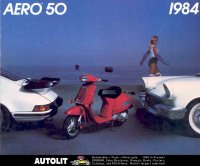I wasn't sure where else to put this, so I figured the safest bet would be to put it in "Off Topic"
I'm in a really complicated situation that pretty much forces me to ride throughout the majority of the winter, if not all of it. I CAN go into it in more detail, but since I want to keep this initial post short-ish, I'll leave that up to you guys to decide if you want to hear the reason behind this stupidity.
Before I start, I've been riding in all seasons for about 6 years now so skill isn't an issue, I've just never had to ride my machine for longer than a few minutes at a time during the winter, so this post is more mechanical in nature.
I live in the middle of nowhere Iowa and will have to be taking gravel/dirt roads to work every day, which means I will be encountering snow and ice on a regular basis. I will also be traveling at nearly full throttle for extended periods of time (you will see why later in the post).
Obviously I will be needing knobby off-road tires at the VERY least, and preferably studded tires. My main concern is my engine. I have three bikes to choose from as my main form of transport, but they are all 50cc two strokes. I have a '79 Yamaha QT50, my old trusty (but slow) steed. I also have a 1986 Honda Aero 50, but it is the least reliable bike I've ever ridden. My best (and newest) is my 2007 TGB Key West, which is the fastest but also my largest, heaviest and has the least amount of ground clearance out of the three.
Before anyone says it, yes I know these are not dirt bikes, I'm posting this here because I figured dirt bike riders would be the most likely to have the answers to my questions. I don't want to risk damaging my bikes, and I'm well aware that riding a little 50cc scooter in the winter is hard on the bike.
I suppose it comes down to this: What should I do to prepare? Should I install a smaller jet to compensate for the lower air temp and higher density of the air? Should I put lighter-weight oil in the trans? What do I need to do to ensure my bike has the highest chance of survival this winter?
I'd really appreciate some help on this, any tips are appreciated!
I'm in a really complicated situation that pretty much forces me to ride throughout the majority of the winter, if not all of it. I CAN go into it in more detail, but since I want to keep this initial post short-ish, I'll leave that up to you guys to decide if you want to hear the reason behind this stupidity.
Before I start, I've been riding in all seasons for about 6 years now so skill isn't an issue, I've just never had to ride my machine for longer than a few minutes at a time during the winter, so this post is more mechanical in nature.
I live in the middle of nowhere Iowa and will have to be taking gravel/dirt roads to work every day, which means I will be encountering snow and ice on a regular basis. I will also be traveling at nearly full throttle for extended periods of time (you will see why later in the post).
Obviously I will be needing knobby off-road tires at the VERY least, and preferably studded tires. My main concern is my engine. I have three bikes to choose from as my main form of transport, but they are all 50cc two strokes. I have a '79 Yamaha QT50, my old trusty (but slow) steed. I also have a 1986 Honda Aero 50, but it is the least reliable bike I've ever ridden. My best (and newest) is my 2007 TGB Key West, which is the fastest but also my largest, heaviest and has the least amount of ground clearance out of the three.
Before anyone says it, yes I know these are not dirt bikes, I'm posting this here because I figured dirt bike riders would be the most likely to have the answers to my questions. I don't want to risk damaging my bikes, and I'm well aware that riding a little 50cc scooter in the winter is hard on the bike.
I suppose it comes down to this: What should I do to prepare? Should I install a smaller jet to compensate for the lower air temp and higher density of the air? Should I put lighter-weight oil in the trans? What do I need to do to ensure my bike has the highest chance of survival this winter?
I'd really appreciate some help on this, any tips are appreciated!


 .
.


